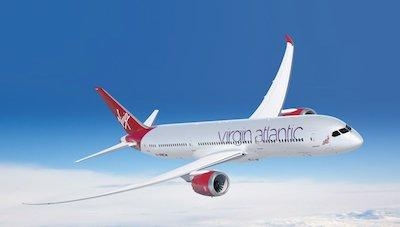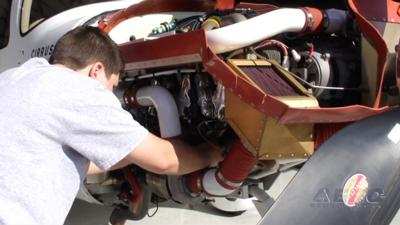Forecast Is Inclusive Of The Commercial Aviation, Business Aviation, And Civil Helicopter Industries
The 2019 Boeing Pilot & Technician Outlook, a respected industry forecast of personnel demand, projects that 804,000 new civil aviation pilots, 769,000 new maintenance technicians, and 914,000 new cabin crew will be needed to fly and maintain the world fleet over the next 20 years. The forecast is inclusive of the commercial aviation, business aviation, and civil helicopter industries.

The demand will stem from a mix of fleet growth, retirements, and attrition. Meeting this strong demand will require a collective effort from across the global aviation industry. As several hundred thousand pilots and technicians reach retirement age over the next decade, educational outreach and career pathway programs will be essential to inspiring and recruiting the next generation of personnel.
The aviation industry will need to adopt innovative training solutions to enable optimum learning and knowledge retention. Immersive technologies, adaptive learning, schedule flexibility, and new teaching methods will be needed to effectively meet a wide range of learning styles. The growing diversity and mobility of aviation personnel will also require instructors to have cross-cultural, cross-generational, and multilingual skills to engage with tomorrow's workforce.
New personnel demand is calculated based on a 20-year fleet forecast for commercial aviation aircraft with more than thirty seats, business jets, and civil helicopters. Based on fleet growth, aircraft utilization, attrition rates, and regional differences in crewing specific to aircraft type, Boeing's Pilot and Technician Outlook estimates the number of new pilots, technicians, and cabin crew needed worldwide.
Slight variations to the forecast can occur on a year over year basis as a result of many factors, some of which include changes in regulations, crew productivity, and aircraft mix. The forecast does not currently include assumptions for single-pilot commercial operations or autonomous airplanes. Boeing continues to track the market for indications of regulatory movement, and will update its forecast accordingly, according to the company.
As pilot labor supply remains constrained, airlines are increasingly seeking to recruit, develop, and train locally sourced pilots. Cadet programs that train aspiring pilots to be a qualified, competent, and operationally-ready first officer have increased in popularity as airlines look to fill future pilot pipelines. Airlines are also recognizing the significant cost burden for students, and bond programs have gained traction as another avenue for interested candidates.

An advantage of today's data-rich environment is the ability to assess knowledge gaps as they occur, enabling training solutions that produce more competent and qualified pilots. With the wealth of historical data available, evidence and competency-based training programs are increasingly being adopted to change how pilots are trained and assessed. Instruction is evolving to train pilots to proficiencies and competencies, rather than a standard syllabus. The goal is to ensure pilots are effectively trained on procedures to address today's most common operational risks and assessed based on key skills and competencies that all pilots should possess.
Over the next 20 years, the Asia Pacific region will lead the worldwide growth in demand for pilots, with a requirement for 266,000 new pilots. North America will require 212,000, Europe 148,000, the Middle East 68,000, Latin America 54,000, Africa 29,000 and Russia / Central Asia 27,000.
As new generation airplanes become more prominent in the global fleet, advances in airplane technology will drive demand for a new set of skills, such as digital troubleshooting and composites repair. Concurrently, operators and MROs will be challenged to ensure technicians continue to maintain the skills and capability necessary to service the large fleet of older generation aircraft. These two skill sets often differ, creating opportunities for the industry to enhance its standard training curriculum.
Mobile and distance learning solutions are supplementing traditional classroom instruction and allow students to continue their studies outside of traditional instructor-led classes. New technologies, such as augmented and mixed reality solutions, are also being tested as a way to improve student engagement, quality of instruction, and knowledge retention. Competency-based maintenance training continues to evolve as the industry focuses on addressing individual students' needs and knowledge gaps.

The need for maintenance personnel is largest in the Asia Pacific region, which will require 266,000 new technicians. Airlines in North America will require 193,000, Europe 137,000, the Middle East 69,000, Latin America 52,000, Africa 27,000, and Russia / Central Asia 25,000.
Cabin crew are essential to ensuring the safety and comfort of passengers and can provide a level of service that enables brand differentiation. As airlines continue to refine business models and personalize offerings to specific market segments, additional demand for cabin crew will result from aircraft up-gauging, denser seat configurations, and multiple cabin configurations. Regulatory requirements and customer preferences will continue to drive demand across the industry.
Training continues to focus on providing superior customer service and ensuring cabin crew have the skills to recognize and mitigate safety risks. Advances in scenario-based training and mobile learning technologies support continuous learning and prepare cabin crew for situations that may occur in the cabin.
Over the next 20 years, the largest projected growth in cabin crew demand is in the Asia Pacific region, with a requirement for 327,000 new cabin crew. Europe will require 194,000, North America 176,000, Middle East 104,000, Latin America 53,000, Russia / Central Asia 30,000, and Africa 30,000.
(Source: Boeing. Image from file)
 Airborne 04.16.24: RV Update, Affordable Flying Expo, Diamond Lil
Airborne 04.16.24: RV Update, Affordable Flying Expo, Diamond Lil ANN's Daily Aero-Term (04.20.24): Light Gun
ANN's Daily Aero-Term (04.20.24): Light Gun Aero-News: Quote of the Day (04.20.24)
Aero-News: Quote of the Day (04.20.24) Aero-News: Quote of the Day (04.21.24)
Aero-News: Quote of the Day (04.21.24) ANN's Daily Aero-Term (04.21.24): Aircraft Conflict
ANN's Daily Aero-Term (04.21.24): Aircraft Conflict





